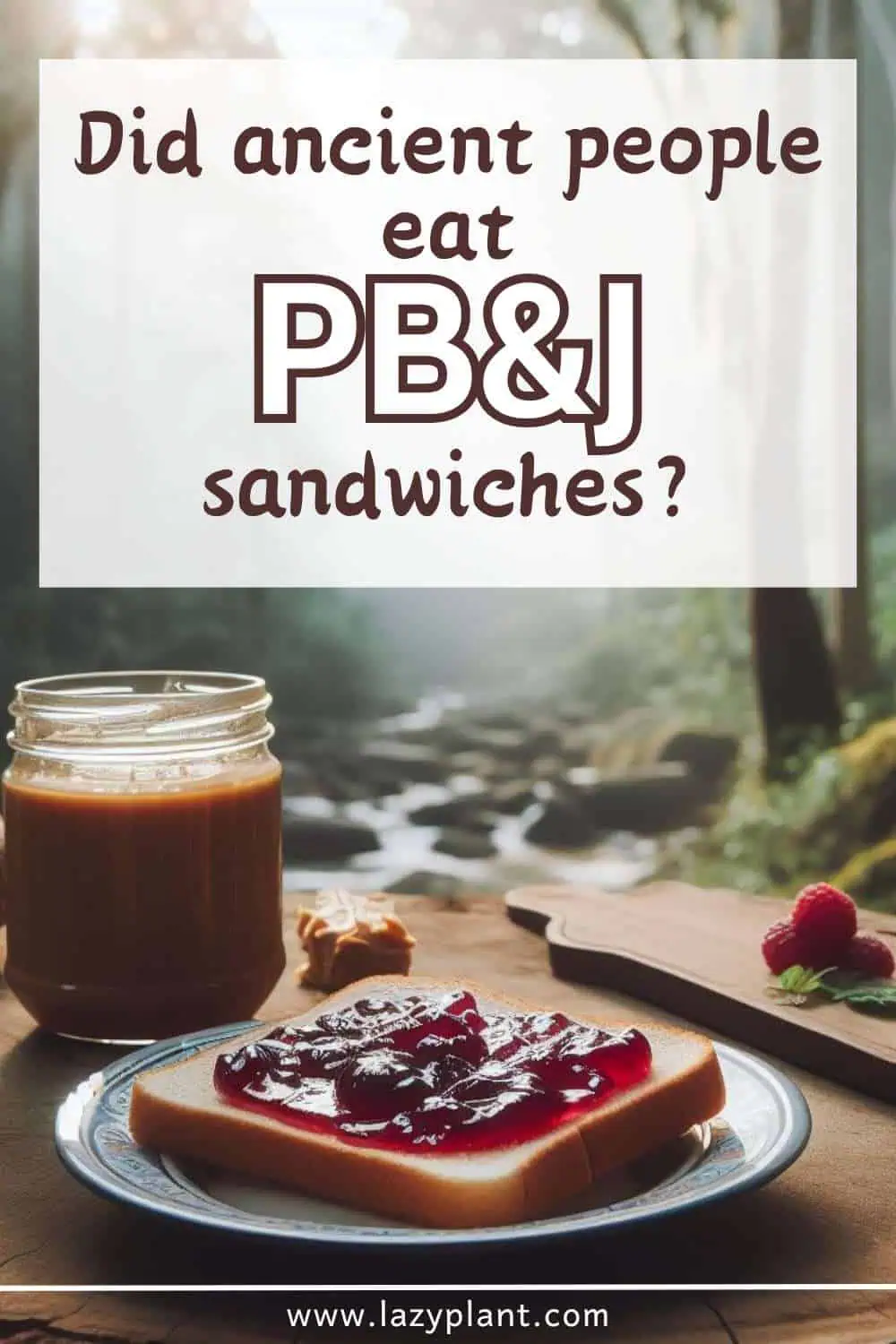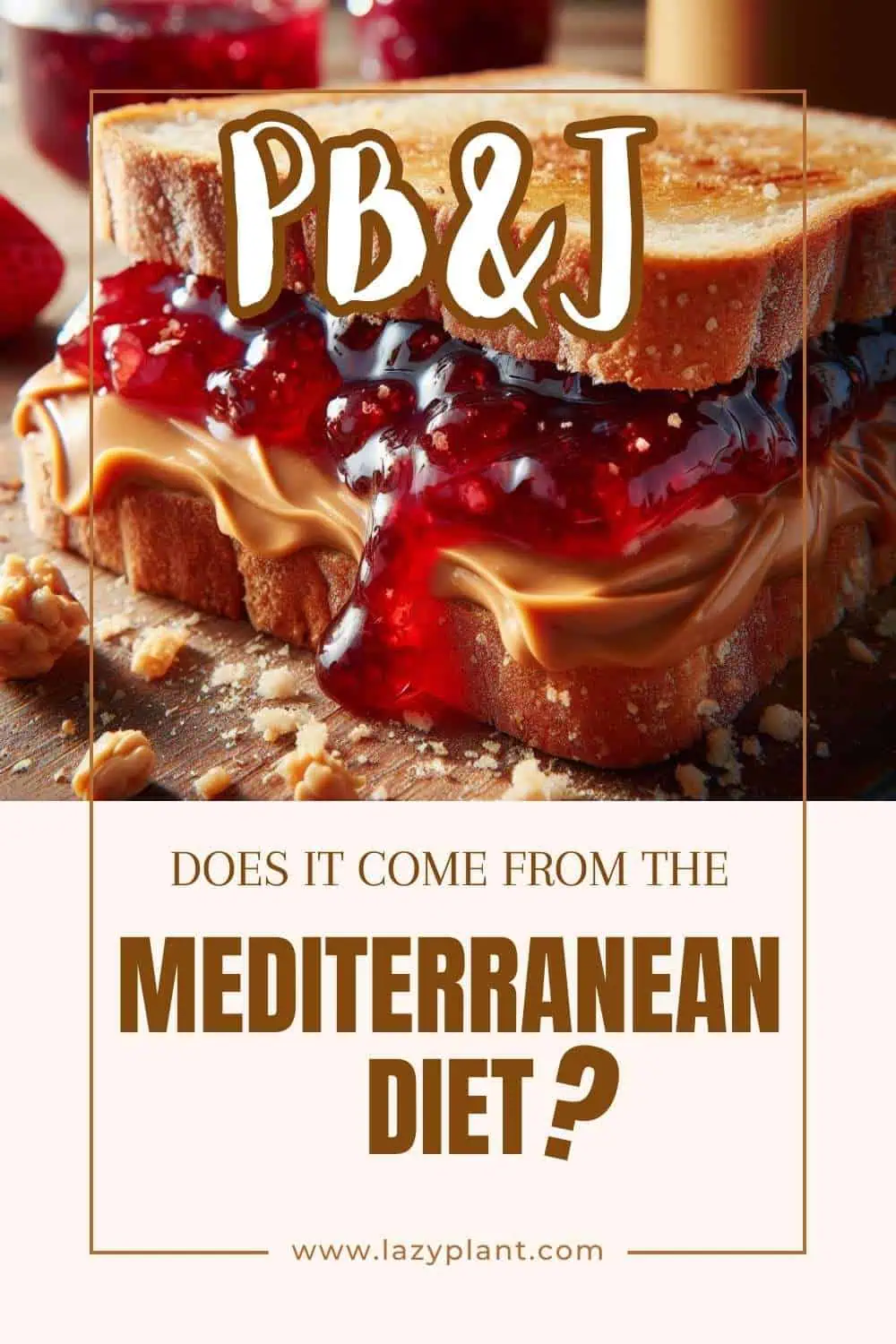The PB&J sandwich, with its combination of peanut butter and jelly/jam, doesn’t have a direct ancestor in traditional Mediterranean cuisine.
Peanuts originated in South America and weren’t introduced to the Mediterranean region until after European colonization of the Americas. Also, while bread is a staple in the Mediterranean diet, it’s often crusty loaves or flatbread, like pita. Sliced bread, ideal for sandwiches, became more common much later.
However, people around the Mediterranean Sea regularly ate fruits with nuts, and seeds and many recipes combined them with barley/wheat flour and honey. While not a direct equivalent, these options highlight the Mediterranean’s use of sweet and savory combinations on bread or flatbread, offering a glimpse into how flavors might have evolved over time.
People around the Mediterranean Sea ate many Nuts & Seeds
The history of nuts spans back to ancient times, serving as a vital component in human diets and cultures across different civilizations.
Nuts have been a beloved food item associated with balanced and healthy diets for centuries.
The discovery of various types of nuts in archaeological excavations dating back hundreds of thousands of years underscores their significance in human diet and survival.[1]
Historical records in the Bible mention almonds and pistachios as commodities for trade.[2]
Nut cultivation, particularly of walnuts, is believed to have originated from Ancient Greece.
The symbolism of nuts in Ancient Greece was deep, with walnuts symbolizing fertility and regeneration, reflecting the cycle of life.
Ancient Greeks considered nuts as beneficial for wisdom and health.
Ancient Greeks and Romans revered nuts such as walnuts and almonds, considering them as food fit for the gods. Walnuts were particularly revered, being called “royal nuts,” with Greeks attributing Zeus, the father of the Olympian gods, consuming them for increased power and wisdom.
They believed that combining nuts with figs and honey in water and flour paste could act as an antidote for strong poisons.
They consumed various nuts and seeds in large quantities, including almonds, chestnuts, pistachios, walnuts, figs, and sesame seeds. Nuts were a part of their breakfast and were also included in their snacks and meals. Also, they often featured in feasts and religious ceremonies.
Monasteries played a crucial role in nut cultivation and preservation during the Middle Ages, contributing to the development of orchards across Europe. During the Renaissance, there was a flourishing trade of exotic nuts, with explorers like Marco Polo introducing Europeans to rare nuts like pistachios and cashews.
The basic components of the traditional Mediterranean diet include olive oil, vegetables, fruits, spices, legumes, cereals, nuts, fish, and wine.
The ancient Mediterranean Jelly
Jelly is made from just fruit juice, with no pulp, seeds, or skin. This gives it a smooth, translucent consistency.
Jam is made from whole fruit or puréed fruit, typically including the skin and seeds. Almost any type of fruit can be used for jam, like strawberry, apricot, or blueberry.
Marmalade is primarily made from citrus fruits, especially Seville oranges, with the rind included. The rind adds a unique bitter-sweet flavor and some texture. Other citrus fruits like grapefruit or lemon can also be used.

The term “marmalade” has its roots in Ancient Greece, where the Greeks used to simmer quinces in honey to create a paste called “melimelon.” This term is a composite word derived from “meli” (honey) and “melon” (quince).
Romans adopted the marmalade. Over time, variations of the original recipe emerged with different fruits and techniques being employed.
The word “marmalade” resurfaced in Portuguese as “marmelo,” meaning quince, and later in French and English as “marmelade.”
What kind of Bread did people living around the Mediterranean Sea eat?
Breadmaking has deep roots in ancient civilizations like Egypt and Greece, with references to its significance in society, family, and religious practices.
In Ancient Greece, each household was responsible for milling their own flour for bread making. The Romans also valued bread highly, particularly white bread.
Greek cuisine relied on three main gifts from the gods: grains, wine, and olive oil, which were considered essential for civilized living.
Grains were a gift from the goddess Demeter, and the Greeks preferred hulled wheat, despite the wider availability of barley in mainland Greece. Different varieties of wheat and barley required hulling before milling, as drying destroyed the gluten necessary for bread making.
Barley and other hulled grains were used for soups, gruel, or making thin bread, while bread made from hulled wheat was a staple enriched with oil, cooked meat, and vegetables, and flavored with herbs, spices, or honey.
Barley was a staple in the Spartan diet due to its abundance in the region and its importance as a source of carbs. Spartans ate barley bread with figs and olives.
The 5th-century Thearion is credited as possibly the inventor of bread ovens and the first bakeries.
Mediterranean Recipes with Nuts, seeds, and Fruits
Some delicious Mediterranean treats share some characteristics with the PB&J sandwich.

Honey and Sesame Seed Flatbread: In some regions, flatbread might be spread with sesame paste (tahini) and drizzled with honey, offering a similar sweet and savory combination.
Tahini is the healthiest spread you can eat. It’s an excellent alternative to peanut or almond butter.
Fig Paste and Cheese on Bread: In some areas, bread might be filled with a spread of fig paste or date paste, balanced with cheese like goat cheese or ricotta. This provides a sweetness and creaminess combination.
Nut and Honey Treats: There are various pastries and desserts throughout the Mediterranean that incorporate nuts and honey. Baklava, for example, uses layers of phyllo dough filled with chopped nuts and sweetened with syrup.
Some traditional Mediterranean desserts and recipes from the Mediterranean Sea often feature ingredients such as nuts, fruits, honey, and grains.
Ancient Greeks created “pasteli”, the world’s first energy bar, using sesame seeds and honey, considering it food for warriors. Honey is the only traditional sweetener on the Mediterranean diet with countless benefits for health and weight management, due to its dozens of phenolic compounds!
History of PB&J sandwich consumption
Nowadays, the PB&J sandwich is a favorite American snack that can be a healthy food option for a weight-loss diet, but the earliest documented mention of a peanut butter and jelly combination appears in a 1901 article in a Boston culinary magazine. The author suggested using peanut butter with “jelly of your choice” between thin slices of bread.[3]
Peanut butter transitioned from a novelty food to a more readily available spread in the early 1900s. The invention of commercial peanut butter grinding machines and the spread’s affordability made it a household staple.
Pre-sliced bread, another key ingredient, became widely available in the late 1920s. This innovation revolutionized sandwich-making and convenience.
The Great Depression (1929-1939) likely played a significant role in popularizing PB&J sandwiches. Peanut butter was a cheap, protein-rich source of sustenance, while affordable jams and jellies provided sweetness. Sliced bread offered ease of preparation.

During World War II, peanut butter and jelly were included in military rations. Soldiers returning home likely continued their newfound appreciation for the simple yet satisfying sandwich. The post-war economic boom and the rise of suburban families further solidified PB&J’s place in American lunchboxes and kitchens.
Marketing by peanut butter brands targeting children further cemented the PB&J as a kid-friendly staple.
You can buy old-fashioned peanut butter on iHerb.